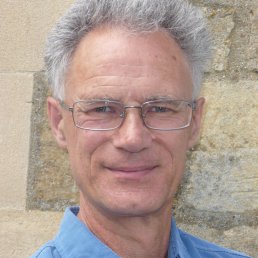Input-independent, optimal interpolatory model reduction: Moving from linear to nonlinear dynamics
Abstract
For linear dynamical systems, model reduction has achieved great success. In the case of linear dynamics, we know how to construct, at a modest cost, (locally) optimal, input-independent reduced models; that is, reduced models that are uniformly good over all inputs having bounded energy. In addition, in some cases we can achieve this goal using only input/output data without a priori knowledge of internal dynamics. Even though model reduction has been successfully and effectively applied to nonlinear dynamical systems as well, in this setting, bot the reduction process and the reduced models are input dependent and the high fidelity of the resulting approximation is generically restricted to the training input/data. In this talk, we will offer remedies to this situation.
Estimating the Largest Elements of a Matrix
Abstract
In many applications we need to find or estimate the $p \ge 1$ largest elements of a matrix, along with their locations. This is required for recommender systems used by Amazon and Netflix, link prediction in graphs, and in finding the most important links in a complex network, for example.
Our algorithm uses only matrix vector products and is based upon a power method for mixed subordinate norms. We have obtained theoretical results on the convergence of this algorithm via a comparison with rook pivoting for the LU decomposition. We have also improved the practicality of the algorithm by producing a blocked version iterating on $n \times t$ matrices, as opposed to vectors, where $t$ is a tunable parameter. For $p > 1$ we show how deflation can be used to improve the convergence of the algorithm.
Finally, numerical experiments on both randomly generated matrices and real-life datasets (the latter for $A^TA$ and $e^A$) show how our algorithms can reliably estimate the largest elements of a matrix whilst obtaining considerable speedups when compared to forming the matrix explicitly: over 1000x in some cases.
Owning a successful DPhil
Abstract
In this session we will explore these and other questions related to what makes a successful DPhil with help from faculty members, postdocs and DPhil students.
In the first half of the session Helen Byrne and Roger Heath-Brown will give short talks on their experiences as PhD students and supervisors.
The second part of the session will be a panel discussion, and the panel will consist of Emily Cliff, Benjamin Green, Paul Taylor and Andrew Thompson. Senior faculty members will be kindly asked to leave the lecture theatre - to ensure that students feel comfortable with discussing their experiences with later year students and postdocs/research fellows without any senior faculty present.
About the speakers and panel members:
Helen Byrne received her DPhil from Oxford under the supervision of John Norbury. She was a Professor of Applied Mathematics in Nottingham from 2003 to 2011, when she moved to Oxford where she is a Professor in Mathematical Biology.






InFoMM CDT Annual Lecture
Abstract
Some models for climate change, the good the bad and the ugly
Modelling climate presents huge challenges for mathematicians and scientists, and has a large effect on policy makers. Climate models themselves vary from simple to complex with a huge range in between. But how good and/or reliable are they?
In this talk I will describe some of the various mathematical models of climate that are both used to understand past climate and also to predict future climate. I will also try to show that an understanding of non-smooth effects in dynamical systems can give us useful insights into the behaviour and analysis of these models.
Maths societies: what are they for?
Abstract
What are the national maths societies for? What can they do for us? What can we do for them?
Featuring representatives from the Institute of Mathematics and its Applications, the London Mathematical Society, the OR Society, and the Royal Statistical Society.
Speaking and listening
Abstract
What is the point of giving a talk? What is the point of going to a talk? In this presentation, which is intended to have a lot of audience participation, I would like to explore how one should prepare talks for different audiences and different occasions, and what one should try to get out of going to a talk.
If effectively harnessed, increased uptake of renewable generation, and the electrification of heating and transport, will form the bedrock of a low carbon future. Unfortunately, these technologies may have undesirable consequences for the electricity networks supplying our homes and businesses. The possible plethora of low carbon technologies, like electric vehicles, heat pumps and photovoltaics, will lead to increased pressure on the local electricity networks from larger and less predictable demands.
Journals and metrics
Abstract
What is the purpose of journals? How should you choose what journal to submit a paper to? Should it be open access? And how would you like your work to be evaluated?
North meets South Colloquium
Abstract
Cluster algebras: from finite to infinite -- Sira Gratz

Abstract: Cluster algebras were introduced by Fomin and Zelevinsky at the beginning of this millennium. Despite their relatively young age, strong connections to various fields of mathematics - pure and applied - have been established; they show up in topics as diverse as the representation theory of algebras, Teichmüller theory, Poisson geometry, string theory, and partial differential equations describing shallow water waves. In this talk, following a short introduction to cluster algebras, we will explore their generalisation to infinite rank.
Modelling the effects of data streams using rough paths theory -- Hao Ni

Abstract: In this talk, we bring the theory of rough paths to the study of non-parametric statistics on streamed data and particularly to the problem of regression where the input variable is a stream of information, and the dependent response is also (potentially) a path or a stream. We explain how a certain graded feature set of a stream, known in the rough path literature as the signature of the path, has a universality that allows one to characterise the functional relationship summarising the conditional distribution of the dependent response. At the same time this feature set allows explicit computational approaches through linear regression. We give several examples to show how this low dimensional statistic can be effective to predict the effects of a data stream.


